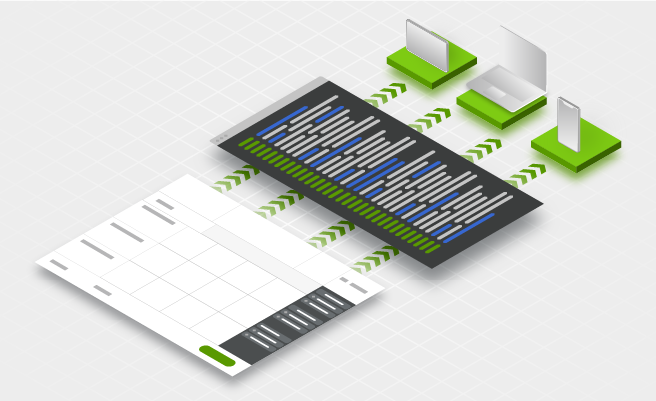- Nov. 18, 2022
- 4 min
The best CMS for developers – and marketers
Magnolia in Aktion
Unser Expertenteam zeigt Ihnen live, was Magnolia für Sie leisten kann.
Jetzt Demo buchenMost traditional CMSs have been designed as monoliths coupling content authoring and delivery. Their architecture enforces rigid development, making the roll-out of new functionality cumbersome and slow. At the same time, development teams feel the pressure to deliver new experiences at record speed.
It’s not surprising to find that developers who have to work with traditional CMSs are frustrated and are seeking better, faster, and more flexible alternatives – this being only one insight from our recent survey amongst CMS users. But the survey also showed that turning to pure headless CMSs frustrates another group of CMS users, the marketers.
Is this an unsolvable conflict?
What IT needs to build digital experiences
When asked about building digital experiences, developers and other IT professionals identified the adoption of new technologies and the automation of processes as their top 2 priorities.
“New” technologies include front-end frameworks like React or Angular that developers are familiar with, frameworks that are up to the challenge of building digital experiences for today’s customers.
Looking beyond today, developers are also seeking future-proof solutions that allow them to respond to new customer demands in an agile way.
When applied to content management, these learnings point away from traditional CMSs and towards cloud content management.
What is cloud content management?
Cloud content management refers to using cloud-based systems to manage content. Shifting away from traditional on-premises systems can lead to digital transformation and increased scalability.
But it goes beyond that.
The challenges with traditional CMSs
Trying to understand the frustration, our survey identified 4 reasons why traditional CMSs fall short:
Inability to unify IT and marketing: Digital experience management is teamwork, but traditional CMSs don’t cater to the needs of marketers and developers equally.
Bureaucracy of managing: Working with a traditional CMS is cumbersome.
Slow implementations: Bureaucracy and rigid development limits the speed at which new functionality can be developed and deployed.
Lack of flexibility: Coupling content authoring and delivery, and enforcing a specific technology framework doesn’t allow developers to choose the best technology to get the job done fast.
Technology for technology’s sake simply won’t cut it. Instead, developers – and their colleagues in marketing – are on the hunt for content management solutions that support their goals.
What developers need from a CMS
The concept of a headless CMS offers solutions to several of the above challenges. Headless CMSs provide IT teams with a secure back-end infrastructure while offering the flexibility to choose a front-end framework that is right for them. With a headless CMS, brands can manage content centrally and make it available to be consumed by any platform or channel via its APIs.
This explains why IT is driving its adoption.
And experience shows that they were right: 99% of IT professionals who have completed their transition to a headless CMS agree that their businesses have seen the benefits. A more flexible design and an increased speed of publishing content are the highest-ranking benefits.
However, headless CMSs also bring challenges of their own, especially for marketers.
Head to Headless Report
1,000 CMS users share their thoughts on the next level of content management and digital experience design.
Headless CMS or hybrid-headless CMS
While developers love headless CMS for their flexibility, marketers feel confused. Only 42% of marketers are confident in their understanding and use of a headless CMS, in comparison to 82% who are confident with a traditional CMS. This is due to the lack of a clear, visual frontend, making it harder for marketers to visualize exactly how their content will appear once published.
As we have seen, the top challenge with traditional CMSs is their “inability to unify IT and marketing”. With a pure headless CMS, this is only going to get worse.
A hybrid headless CMS, on the other hand, blends headless technology with the traditional full CMS author experience, giving developers and marketers the best of both worlds.
Magnolia takes this approach and offers a unique visual editor for single-page applications (SPA) to complement its headless CMS. The SPA editor provides a visual preview for marketers and content teams, while retaining the flexibility of a headless CMS. It allows marketers to view and craft the end-user experience, yet work with clean, structured presentation-independent content.
This approach results in happy developers and happy marketers and as one of our customers said it: “Marketing have what they need and they don’t bother us. It’s great.”
Check out our “Head to Headless” report to learn more about the results of our CMS user survey.









